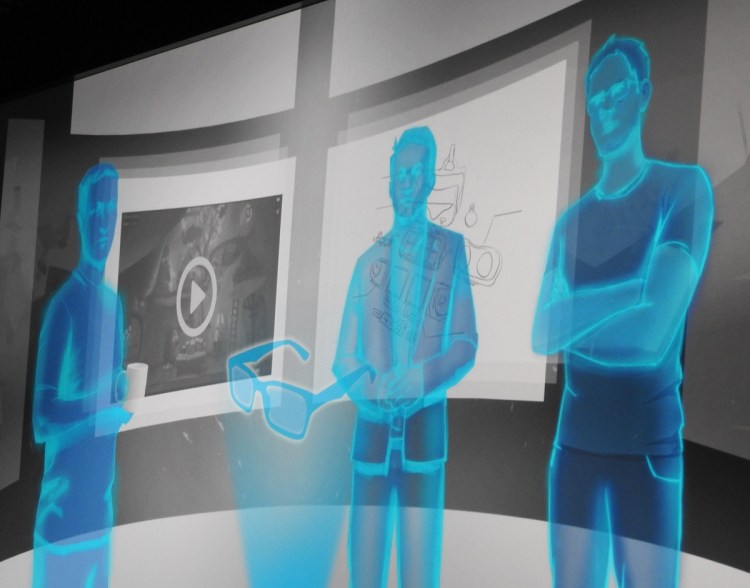Episode two of this season’s Black Mirror, ‘Playtest’, sparked the question by many including Tyler Wilde, Executive Editor at PC Gamer, to ask the question, “Is there a line where virtual reality becomes dangerous, and will we stop when we find it?”
I don’t want to be a party pooper, but it appears the VR industry is treating safety as an afterthought rather than addressing it proactively. There is not enough publicly-accessible research in our hands on how VR content definitively affects the brain or body except for the mostly anecdotal comments about cases of nausea and, of course, the spectacle of people falling over wires.
About two years ago, UCLA released research that found our brains do not react to virtual reality in the same way we had thought. “The pattern of activity in a brain region involved in spatial learning in the virtual world is completely different than when it processes activity in the real world,” said Mayank Mehta, the research lead for the study at the UCLA. One of the main takeaways was that these findings should prompt the industry to further investigate and research the effect of VR on neurons.
Fast forward almost two years, and the Guardian publishes an article on the same topic showing that not much seems to have changed. “We haven’t really yet got to the stage where people have been using virtual reality for prolonged periods of time — over, for example, periods of weeks or months — to identify with any clear certainty any long-term effects of virtual reality.” Sarah Sharples, professor of human factors at the University of Nottingham and president of the Chartered Institute of Ergonomics and Human Factors, told the Guardian.
In an article published earlier this month on Live Science about the safe use of VR by children, Marientina Gotsis, director of the Creative Media & Behavioral Health Center at the University of Southern California School of Cinematic Arts, said this: “We do not have enough data on the safety of current VR technology for children, so the sparsity of research data and what we know about neuroplasticity [the brain’s ability to reorganize itself] and children does not make me comfortable to recommend what is available now as is.”
There is a regular stream of news bulletins about how VR can help in the case of phobias, mental illnesses like depression, and even as sex therapy. But what about the potential flipside where specific experimental content, prolonged use, or usage of certain technology, actually adversely affect us psychologically?
The recurrent advice I keep coming across is to follow our common sense, be sensible about our own behavior, and to take note of the side effect guidelines posted by hardware makers, such as the one provided for the Oculus Rift. For the most part, the industry appears to be placing the onus of responsibility on the user by putting precautionary notes into product descriptions such as disclaimers warning pregnant women not to use the device.
VR Bound has published some guidelines for parents who may be understandably concerned about exposing their children to this immersive technology. “Until the industry conducts more research into the effects of VR on children, you’ll need to mostly rely on your common sense and maternal instincts,” reads the page. It also mentions a report that warns about prolonged use in 3D environments causing “strabismus, the abnormal alignment of the eyes or the condition of having a squint.”
I find the situation troubling because I expect the big hardware and software players to be responsible for making this research more readily available before hundreds of thousands of headsets are brought into living rooms around the world. There is currently such a frantic push to jumpstart the industry that there doesn’t seem to be time to check whether we’re unnecessarily putting ourselves in harm’s way.
“Unless and until there is some comprehensive statute or regulation on VR or software liability (exceedingly unlikely at the moment), “the system” will hash out individual cases in the courts.” Jesse Woo, a contributor to a recent white paper on the legal implications of AR/VR from the University of Washington Tech Policy Lab, told me. “My guess is that absent some seriously negligent or malicious actions, sufficient warning labels will protect most firms acting as media companies; it’s a different conversation if you want to talk about using VR as a treatment device though.”
The general attitude I come across in the industry is that it’s okay to turn a somewhat blind eye to the possible repercussions of all of this, particularly in relation to how our brains change with long-term use, or neuroplasticity, which no one really has a clear idea about. In fact, I can instantly feel thousands of brows furrow by my even raising this is an issue, but the question stands: Shouldn’t users of VR have the right to make an informed decision?
Amir-Esmaeil Bozorgzadeh is the co-founder at Virtuleap, a sandbox for creative developers to showcase their VR concepts to the world. He is the European Partner at Edoramedia, a games pubisher and digital agency with its headquarters in Dubai. Follow him on Twitter: @whiteboxamir.


